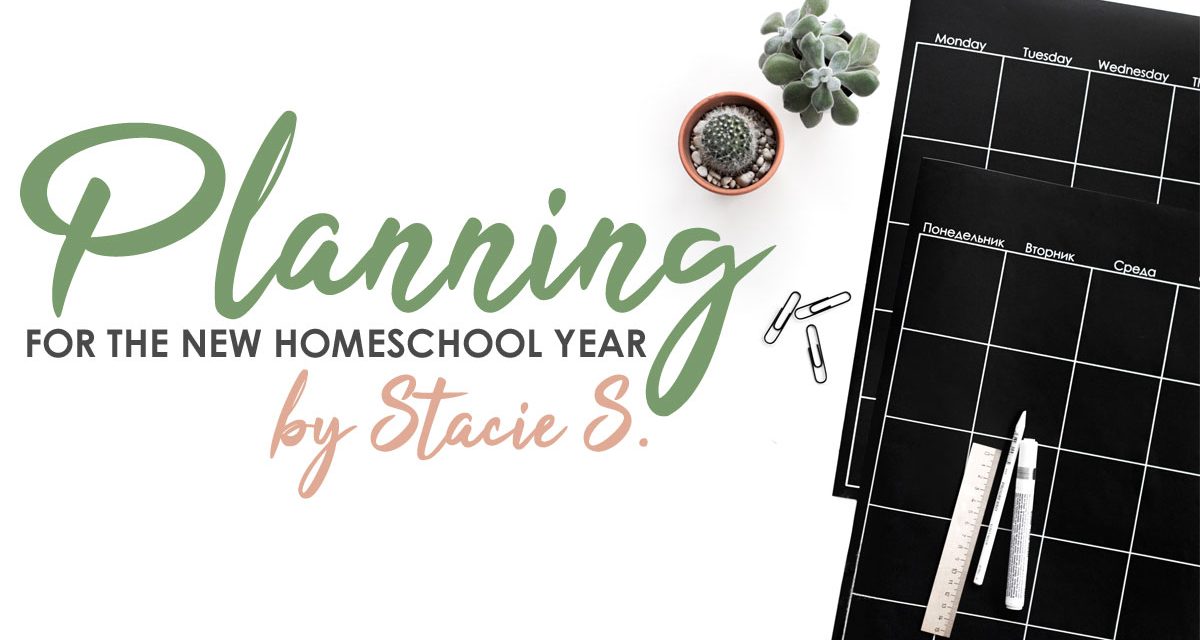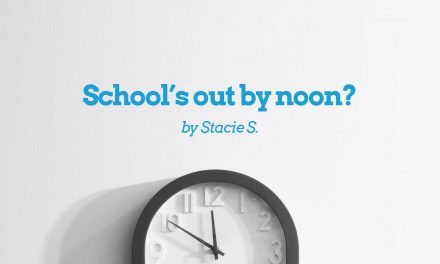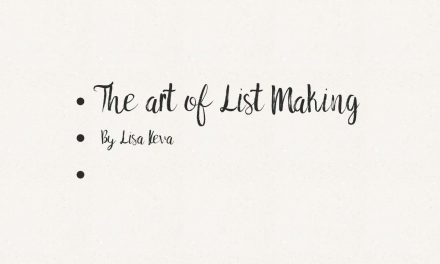If you’re like me, you’re in the midst of planning for the upcoming school year–book lists, curriculum choices, homeschooling methods and staying within the budget, right? I’m peeking my head up out of my stacks of planning lists to share what I do to plan each year.
Oldest Goes First
I begin with my oldest child because she is most likely to need new curriculum out of all the children. Whatever she used in prior years, I have passed down to younger siblings. Whatever grade my oldest child is going to is also the grade I haven’t taught yet, so this is where I will spend most of my time in making new curriculum choices.
After I have made decisions for my oldest child, I work my way down until each school-aged child is accounted for. After that, I even do a little “planning” for the littlest ones. Since toddlers and preschoolers don’t need much by way of curriculum, this planning is mostly for me so I know what basics I want to focus on with them (i.e. letter recognition, counting, colors, etc.)
Subject By Subject
I choose curriculum for every subject I am going to teach my oldest child before I move on to the next child. Subject areas are of course guided by the state’s homeschooling laws on what must be taught, so I make sure each of those things is checked off first before I add in the extras. This just gives me a step-by-step approach in making sure I don’t forget anything.
Shop Your Shelves
Before I purchase brand new curriculum, I check to see what I have on-hand first. As much as we possibly can, we like to purchase non-consumable books so that we can obviously pass them down to the next child in line and save a bit. We began our homeschool this way seven years ago, back when my 4th child was on the way and I was only schooling two. What’s the point? You don’t have to be a large family to save money!!!
Non-consumable books not only save you money in the long run, but it also breeds familiarity for me as mama-teacher. I get to reflect on what the children and I liked about previously used materials, what worked for us and what didn’t, and what I may need to change or add for the next child in line. I don’t have to learn new curriculum for every child in every subject–that’s just too much! Even my older children recall fond memories as they see the books they’ve used before get another rotation. Shop your shelves first!
Compare Prices
Next, I take a good look around before clicking the order button. I pay attention to publisher coupons and promotions in the summer. I also shop used-curriculum sales in my community as much as I can. I am not afraid to buy used!!! I’ve been able to find expensive items like microscopes and complete science kits deeply discounted. I also have a few good, tried and true places where I like to shop online for school books, but my favorite is Rainbow Resource. They have great prices and super friendly folks available to help answer any questions about curriculum options.
Piece It Together
Sometimes the glitz and glamour and shiny pages of new books are too much. Sometimes the price tag itself is just too much. Sometimes you just don’t need another workbook or teacher’s manual. Sometimes. . . you just have to scour the internet and piece things together yourself!
Many mom/homeschooling blogs have free printables available for things like flash cards, handwriting, spelling, timeline figures etc. Others have links to tons of free resources from 1st grade readers all the way up to high school level science. I have found many sites over the years to be such a blessing to my family because they took the time to share. Not only can a good Google search save a few dollars, it can also bring peace of mind by making up where the curriculum sales have fallen short.
Print-outs, Supplies and Assignments
Once the books are chosen, it is now time to assemble the materials and get things situated. I try to do this for the entire year for all of my children. I like to purchase all the science supplies needed for experiments for the entire year, print off all the worksheets that go with all our lessons, and select any assignments ahead of time that aren’t already laid out for me. Yes, it’s a heavy lift now, but oh so convenient later for when I’m in the thick of schooling. {You can read a bit about this here!}
Reflection, Prayer and Notetaking
Above all, take the time to reflect on the previous year of homeschooling. I take a good look at what worked before and what didn’t. I consider what things need a little tweaking, what things must remain the same, and what things must go. All, the while I pray!!! The Holy Spirit is available for homeschooling, too so it just makes sense to ask God for His guidance as I plan for each one of my children. And as always, He’s faithful, friends!
In the notebook where I jot down my potential curriculum choices, I also keep a section for general homeschooling ideas. While I’m researching and looking things up, I may get an idea on something I’d like to implement or do differently, so I’ll write that down along with the initial of the child it pertains to. That way I can come back to it later and not forget whatever awesomeness the Lord has place on my heart.
I hope these ideas are a help to you. Remember, take a deep breath mama. . . you can homeschool your children!!!
How is your homeschool planning going? Any resources to share? Have you made your curriculum choices? Have you started school yet or decided on a start date?





